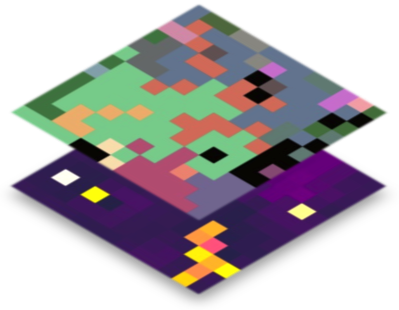Evo2Sim
Typically, it can be used to investigate how evolution shapes the different structures of an organism (e.g., genome size, complexity of the regulation network and of the metabolic network) and of an ecosystem (polymorphism, speciation) depending on global parameters such as environmental conditions or mutation rates.
Evo2Sim is individual-based. Digital bacterial-like organisms own a coarse-grained genome made of “units” encoding for simplified genetic regulatory network and metabolic network. Digital organisms evolve on a two dimensional toroidal grid, uptaking, transforming, and releasing metabolites, dividing in empty spots or dying. The source code is written in C++.
Evo2Sim is distributed under the open source GNU General Public License (see GNU Licenses). To install and start using Evo2Sim, please report to the user manual, included in the package.
If you have any questions/suggestions, feel free to contact us.
Evo2Sim is now on Github:
Github repository
Last version update: 16/03/2017
Simulation examples
To test the following simulation examples, please download the attached packages. They contain simulation backups and the associated code version.
Then compile the software, create the simulation from parameters files, or simply run it from backups files (see the User Manual provided in the package for detailed help).
You can track evolution on the fly thanks to the html viewer, and to the script track_cell.py, that displays the internal dynamics of a selected individual on the grid.
Evolution of a stable polymorphism
Download the example
Lactose-operon-like regulation
Download the example

Background image - Young Tree, 1932, Paul Klee
